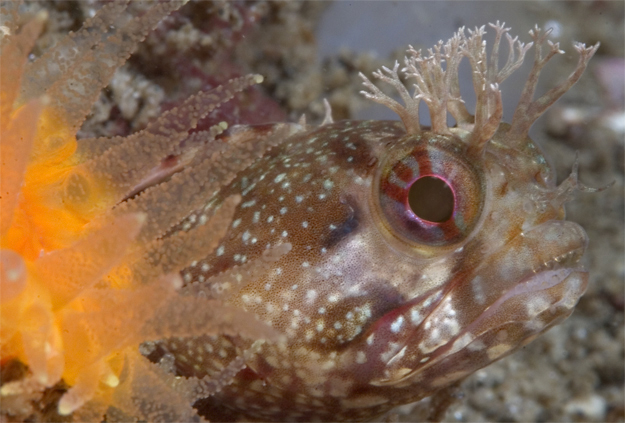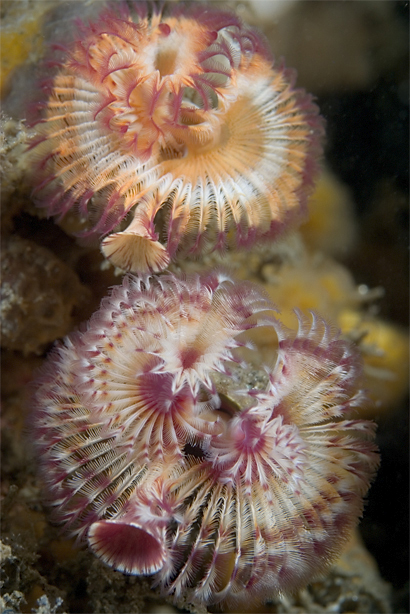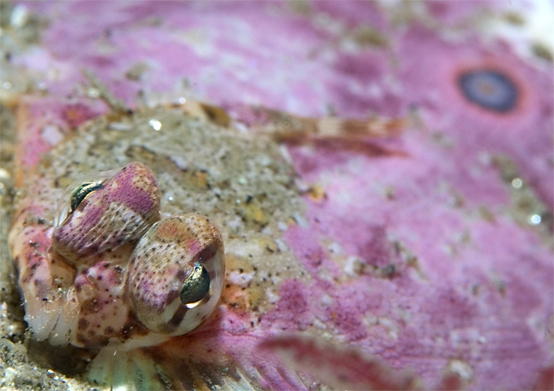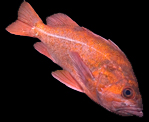
April 15, 2006

It's often quite difficult to figure out the scale of subjects in underwater
photographs. If the photographer is taking pictures of something quite small,
like this yellowfin fringehead (Neoclinus stephensae), and wants everyone
viewing the picture to know the scale, then, it's a good idea to include some
kind of reference item in the shot itself. This image uses an orange cup coral
(Balanophyllia elegans) for this purpose. While the cup coral, like the
fringehead, is likely unfamiliar to the viewer, the transparency of its arms are
an almost sure indication if its size.
"Tanker Reef", Monterey Bay, California
April 15, 2006

If Dr. Seuss engineered a tube worm, I suspect he might have come up with
something like these two Surpula vermicularis. A classic, example of an
animal that is ubiquitous but seldom photographed, surpulids retreat into their
calcerous tubes should a would-be photographer so much as cast a shadow in their
vicinity. Not surprisingly, shots like this one can be something of an extended
project. I'll likely return to this spot to work on it some more.
"Tanker Reef", Monterey Bay, California
April 15, 2006

C-O soles (Pleuronichthys coenosus) are named for a distinctive pattern
on their caudal fin that looks like (yup, you guessed it) the letter "C"
followed by the letter "O". This one has gone a little crazy trying to match the
color of some coralline algae. The color scheme makes it appear the animal's
pectoral fin is, in fact, the tail of some smaller fish with gigantic, bulbous
eyes. Unfortunately for me, this is something I didn't notice until I sifted
through the day's pictures -- I dismissed this as a worthy subject prematurely
"Tanker Reef", Monterey Bay, California
April 15, 2006






